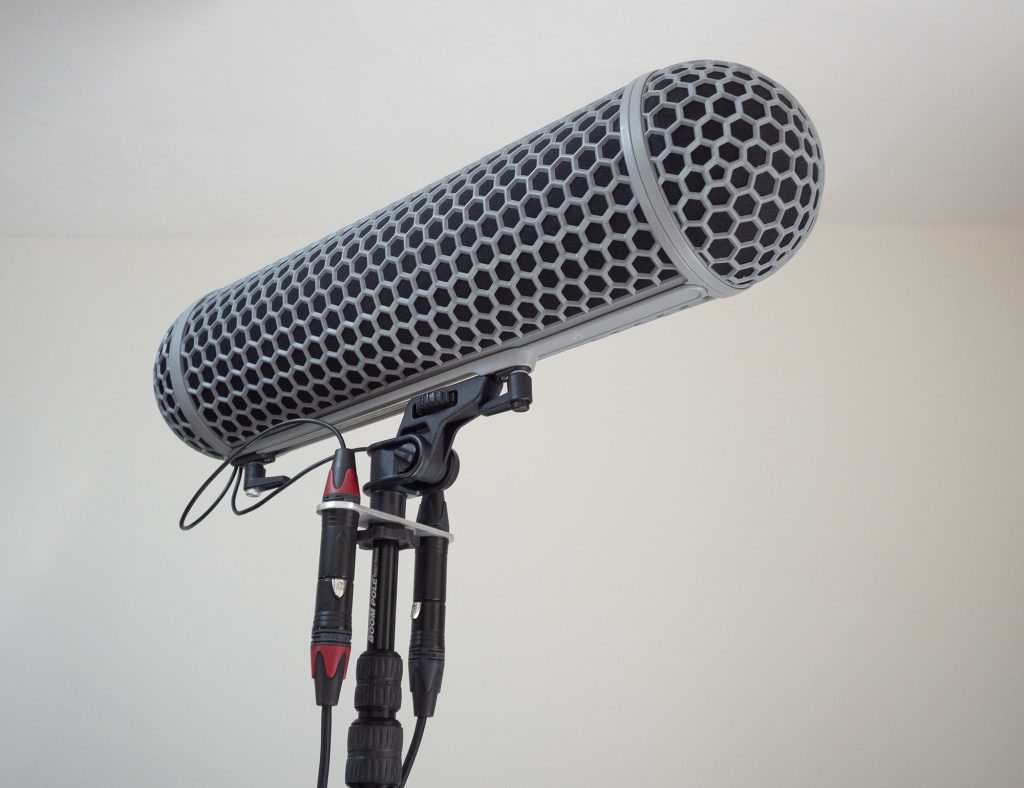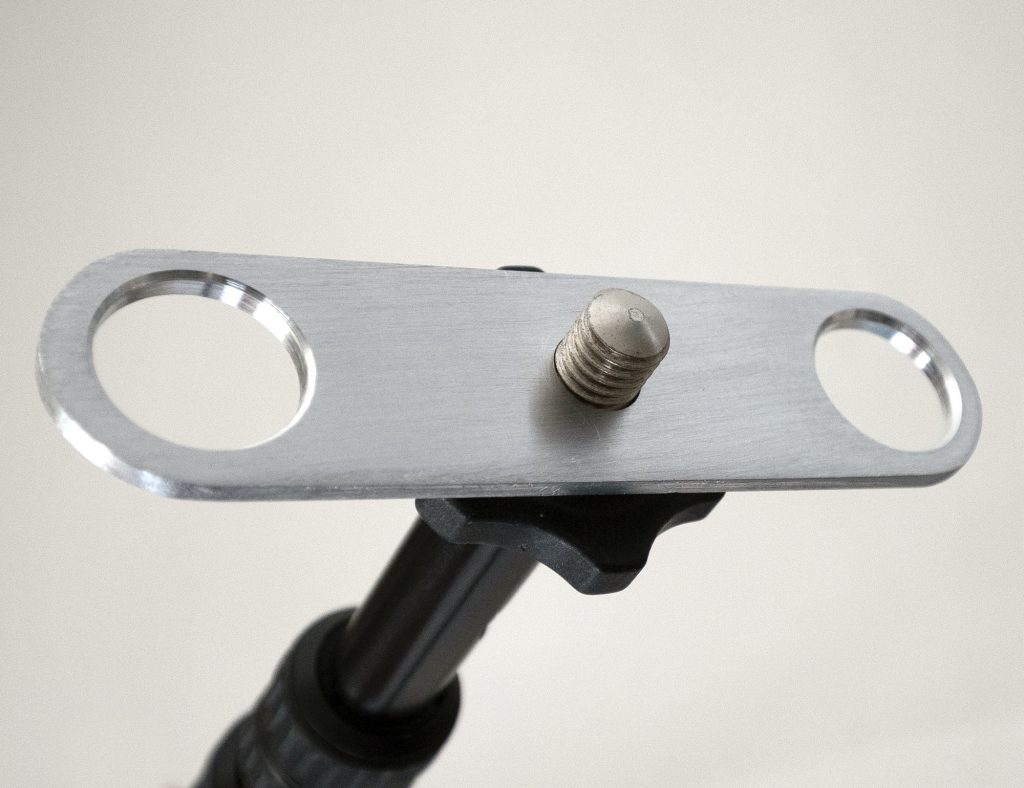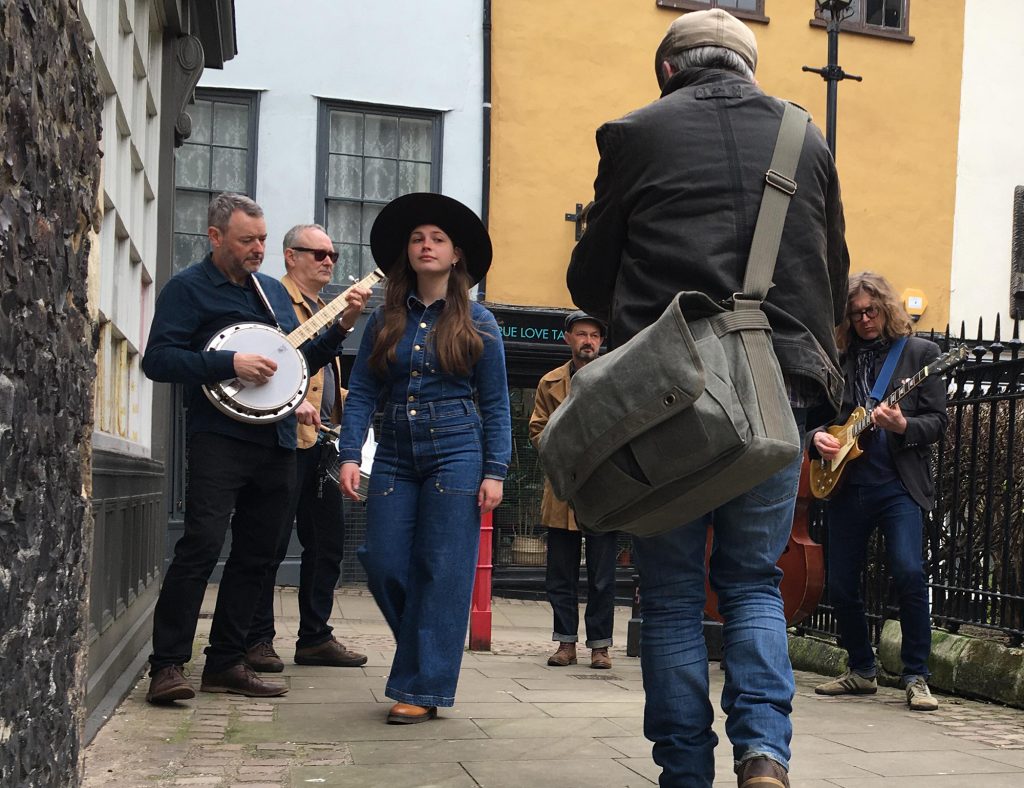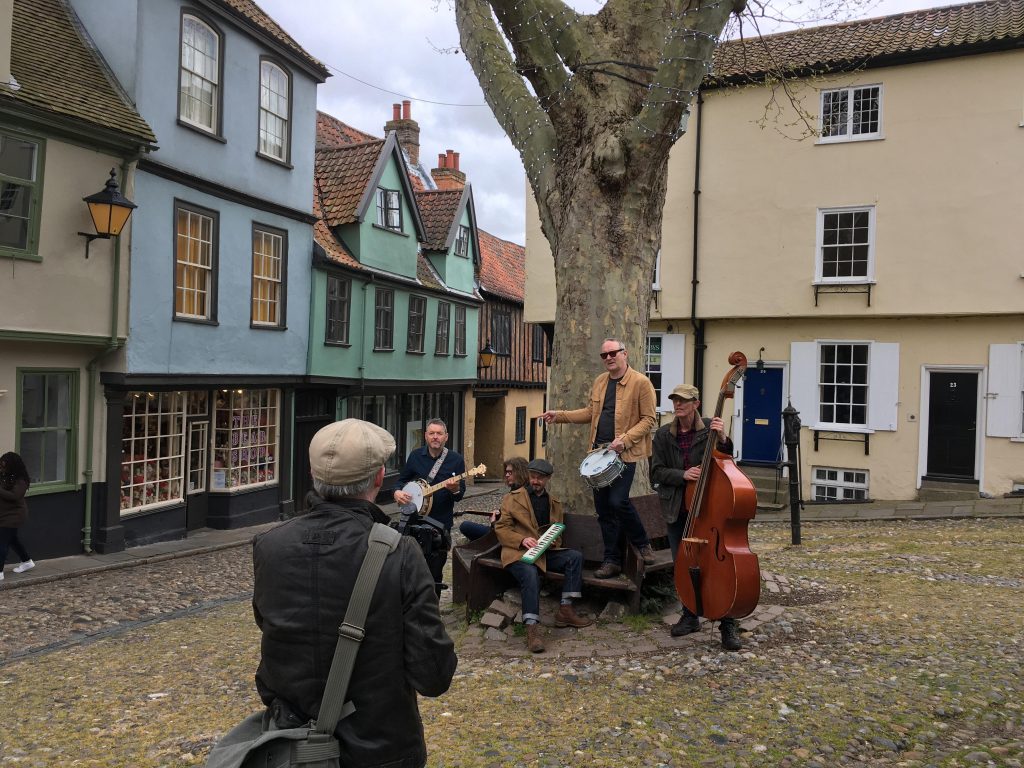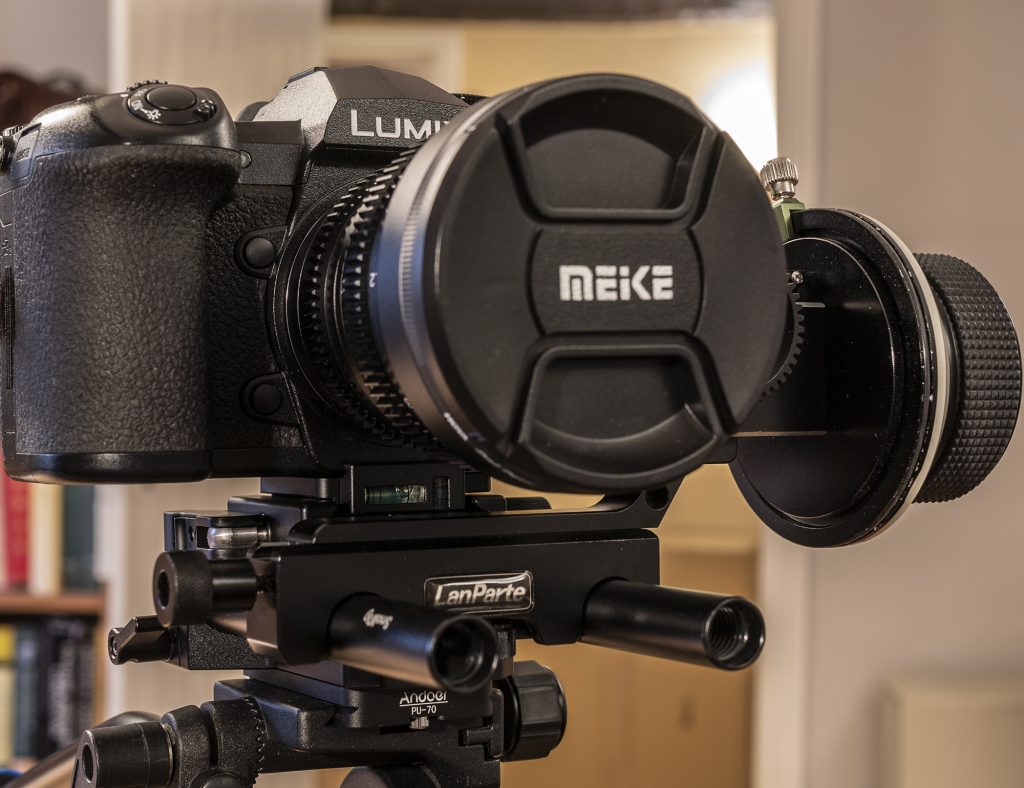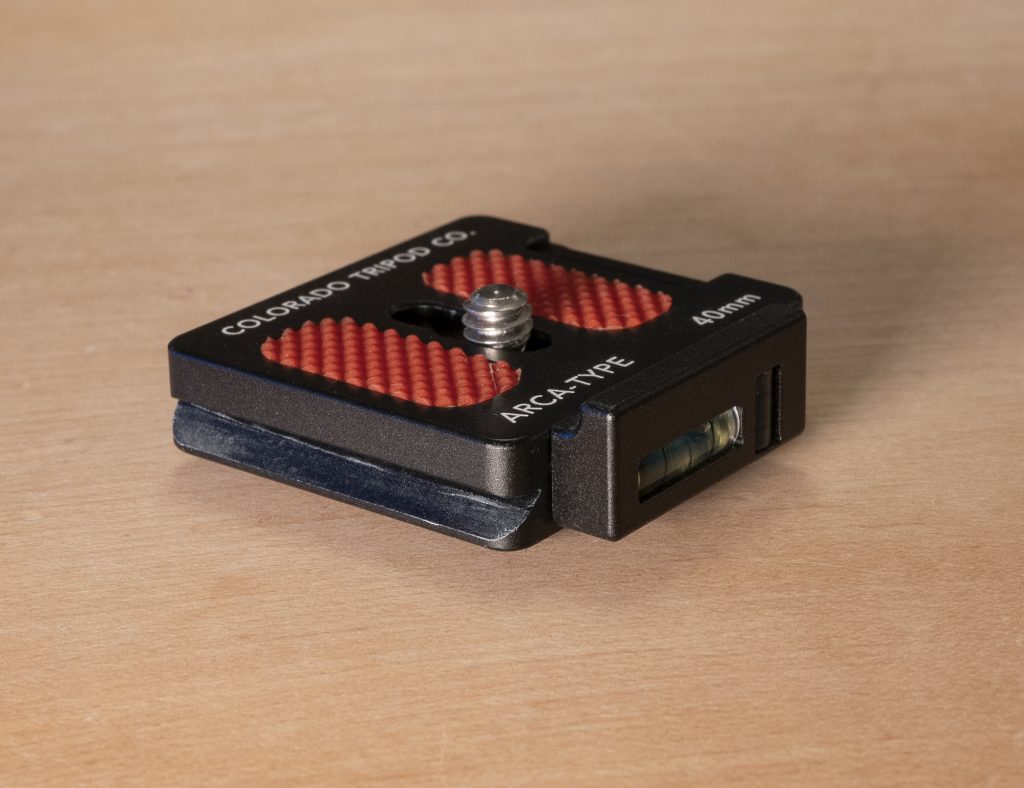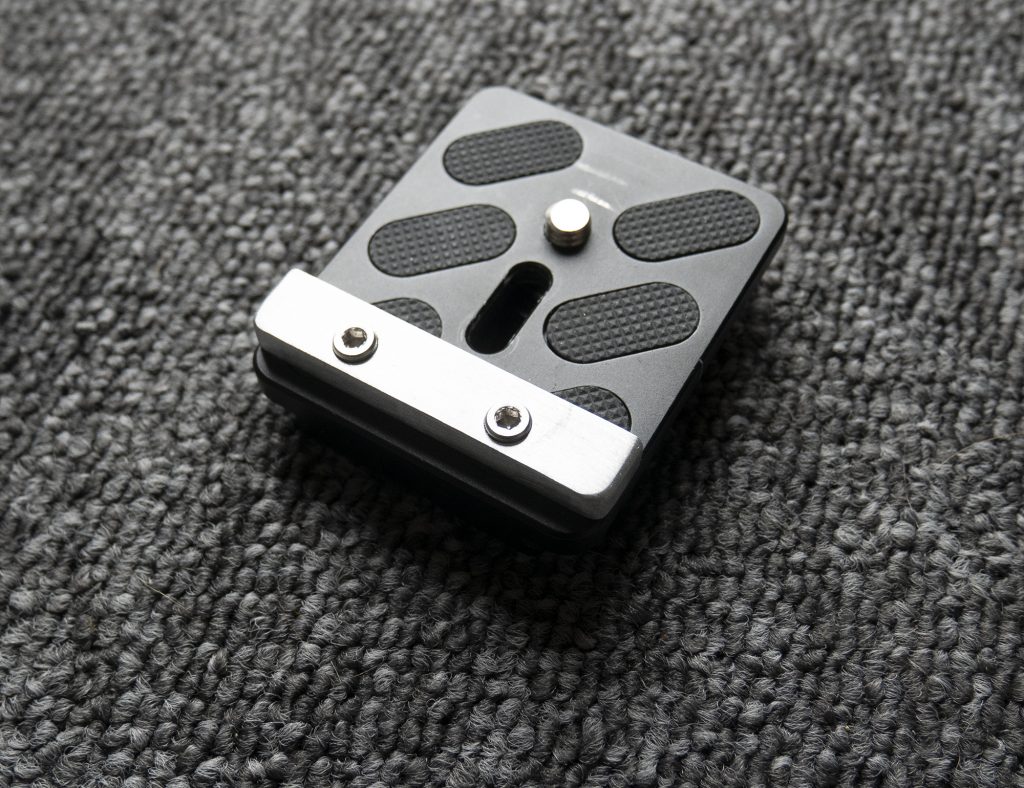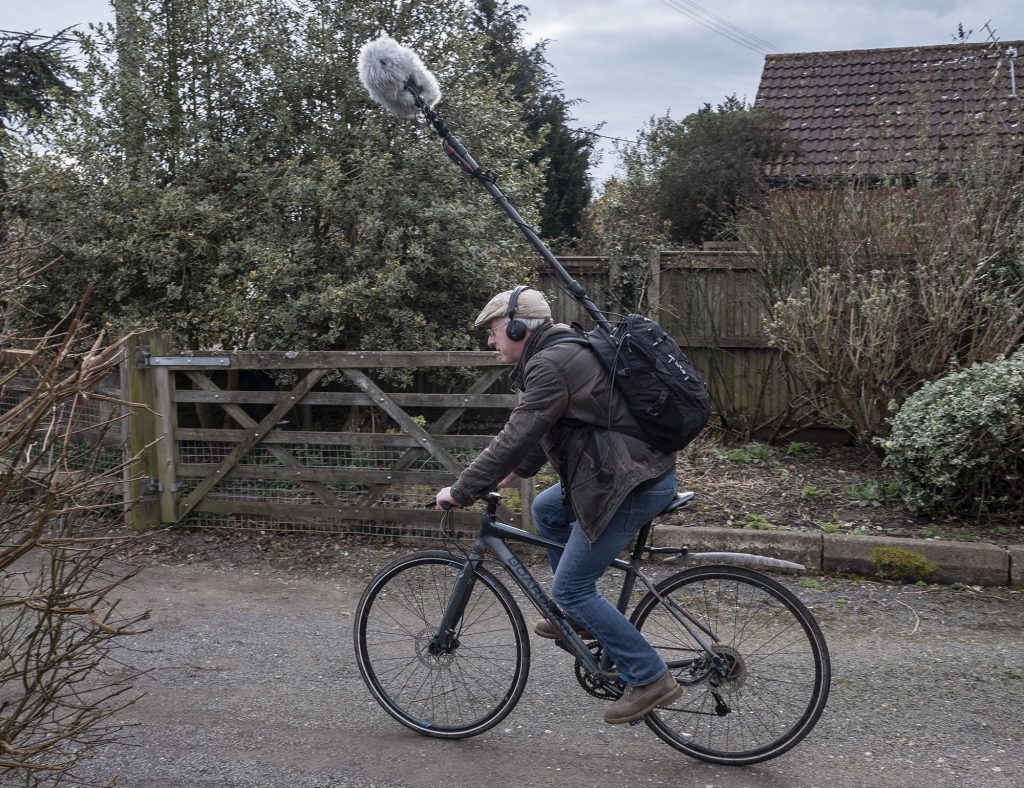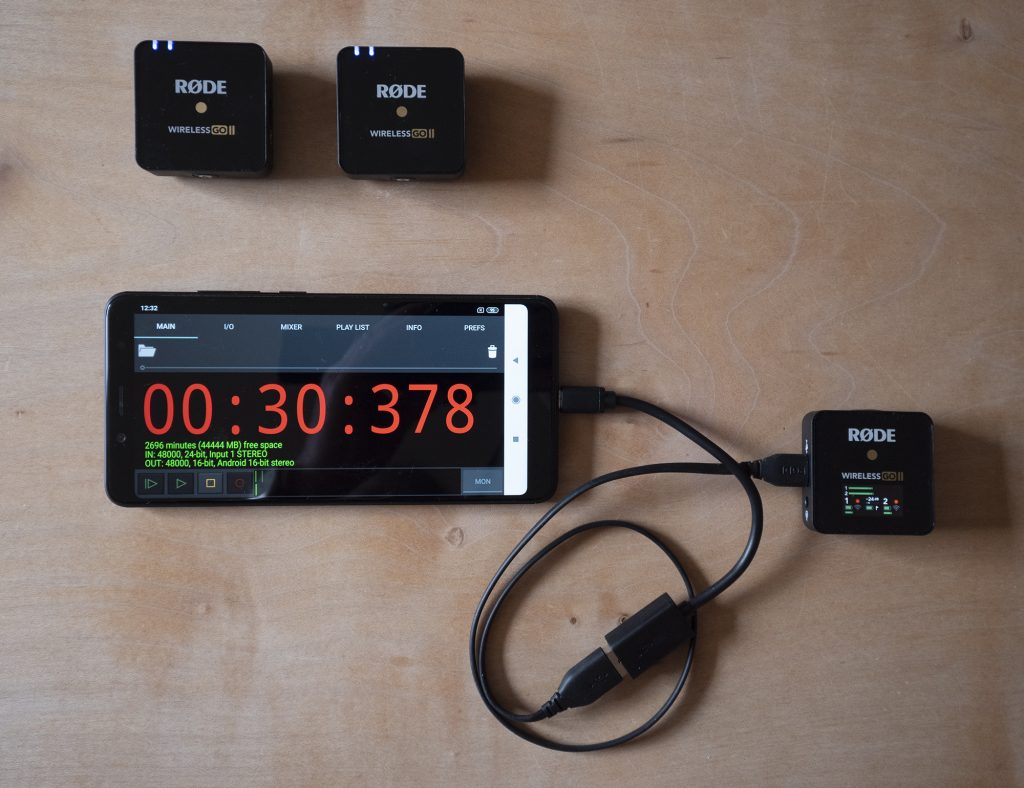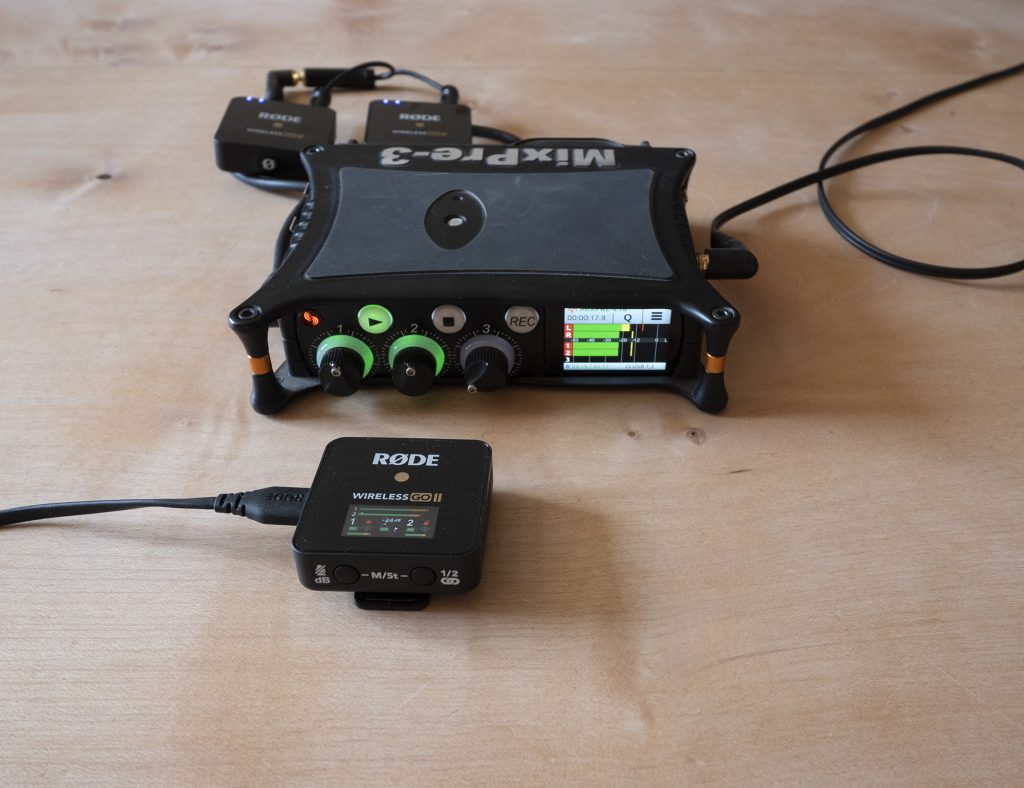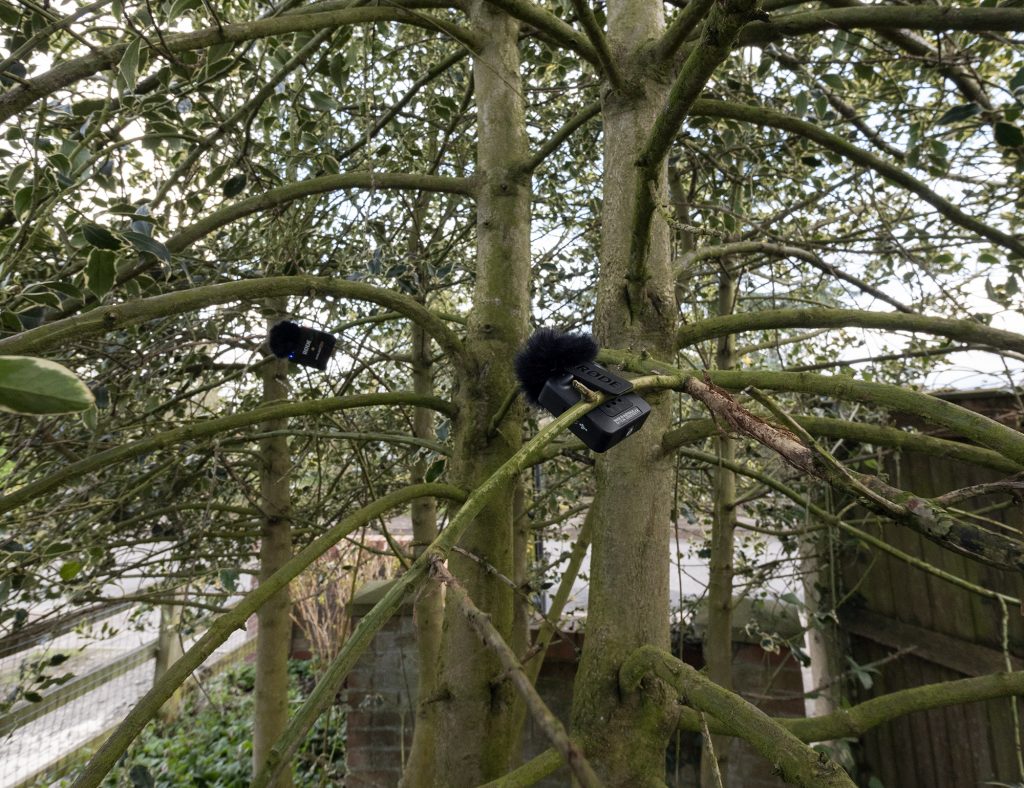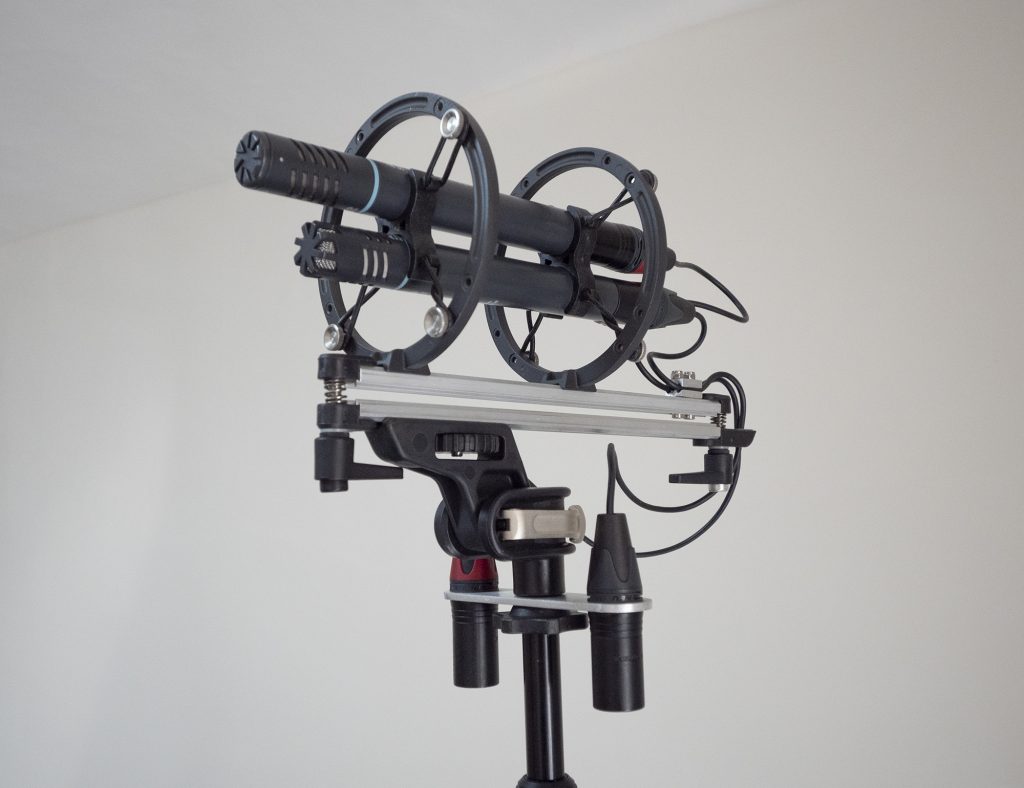
I’ve had one of the AKG Blueline mics for years. This has the CK93 capsule, which is an excellent mid-price hypercardioid SDC mic that has proved great for booming indoor (and, on occasion, outdoor) dialogue. I have also used it for music recording where I needed a narrower polar pattern than cardioid. It is leagues above my Oktava MK012 hypercardioid – so beloved by indie filmmakers – in terms of build quality, handling noise, and features (having low-cut and attenuation switches).
From time to time I’ve wondered about the other interchangeable capsules in the Blueline range and, above all, about the CK94 – the figure of eight capsule. Of course LDC multi-pattern mics include a fig 8 polar pattern and, paired with another mic, this allows mid-side recording, which I have done many a time. And, as I have posted, with a massive DIY blimp I have even got such an LDC pair outside for field recording. That said, it would be useful and, for most uses, more practical to have a compact SDC mid-side pair. The standard for field-recording pros is the Sennheiser MKH30, which, while excellent and with the advantage of humidity-beating RF technology, has the distinct disadvantage of cost: it has a street price of around £1500, and even used ones seem rare below £1000. Add another Sennheiser MKH mic (say an MKH40) and wind protection to fit and you will need to spend £3000 or more. Unlike other polar patterns, SDC fig 8s are rare, and there are few more affordable ones: ignoring the clunky pseudo fig 8s made by Oktava and Kortwich (made using two cardioids mounted back-to-back, giving a T-shaped mic), the only affordable true single -diaphragm fig 8 other than the AKG CK94 is the Ambient ATE208 Emesser. The latter, however, has a lot of bass roll-off due to it being tailored to match the off-axis response of a shotgun mic (its intended partner). Recently, boutique Taiwanese mic-maker B9Audio has produced the CM180, but it is only available direct from the maker: so this means significant shipping and duty costs need to be added to the US$749 price. Reviews are also thin on the ground to say the least.
So, with all this in mind, the AKG CK94 remains the most viable affordable SDC fig 8 for general usage (i.e. music as well as film sound). Although now out of production (AKG/Harman/Samsung appear to be phasing out the whole Blueline family and the CK94 was the first to be discontinued), at the time of writing it is just possible to find one or two new examples for sale: with the SE 300B amplifier/mic body, street price is around £600. But I’ve been keeping my eye on the used market, and was please to spot one on the Saturn Sound website (where there is a list for a grand closing down sale of mics – with some very rare examples), and – together with the SE300B amplifier/mic body – the other day I became the owner of a very good condition example: indeed, during a pre-sales check, Ashley Styles of Saturn Sound thought the capsule a bit noisy and replaced it with one he still had. All this, plus delivery in person (he has retired not so far away), for a remarkably affordable £200.
I had no concerns about the CK94 for music or louder effects recording, but, with 22dBA self-noise (a long way from the MKH30’s 13dBA) my hopes were low for recording quieter ambiences. So I was surprised how good it sounded during an initial test recording the ambient noise in the garden (in a village in rural Norfolk). You can have listen here:
I was expecting something much noisier.
In terms of rigging it up for field recording, I purchased a couple of the older style (i.e. lower profile) back-to-back clips made by Rycote (ref. no. 048460), which, unlike the new fit-any-mic clips Rycote make for MS pairs, neatly fit into a Rode Mk1 blimp and have lugs to attach to the suspension bands: the mics sit centrally and with a healthy blimp diameter of 100mm there is still plenty of air space around both mics. The CK94 has to project further forward given the location of its capsule (the centres of the two capsules should align, of course). I’ve added a DIY conn box equivalent (a clamp for the two thin cables – Sommer Cicada – that go from the mics to the DIY boompole-top XLR holder) to avoid the two heavier cables entering the blimp, so I’m there with a very nice sounding SDC mid-side rig for a very modest outlay. And, of course, I can use the AKG CK94 with mid-mics other than the hypercardioid CK93: for example, my Rode NT55 mics give me cardioid and omni mid-mic options. I’ll post other recordings – including music – with the CK94-based mid-side rig in due course.
